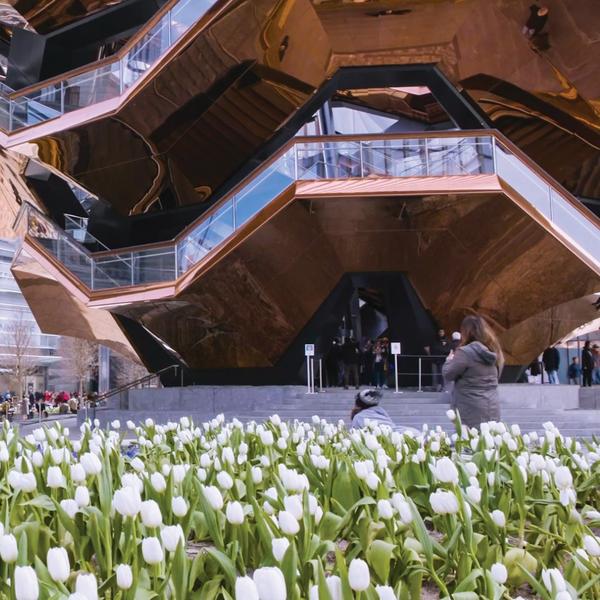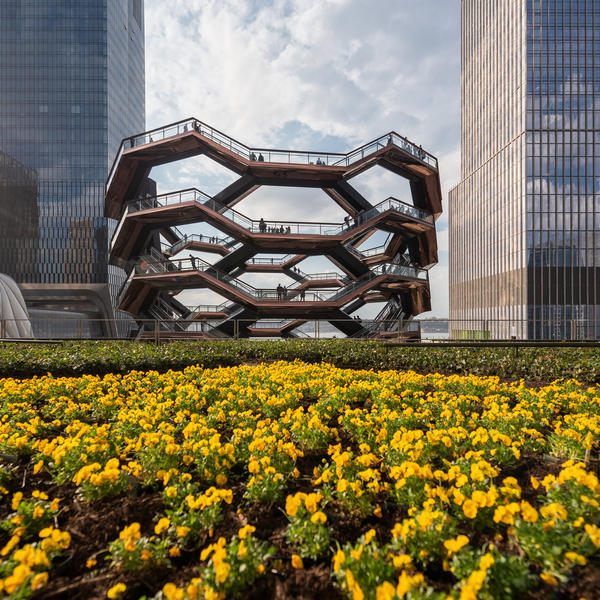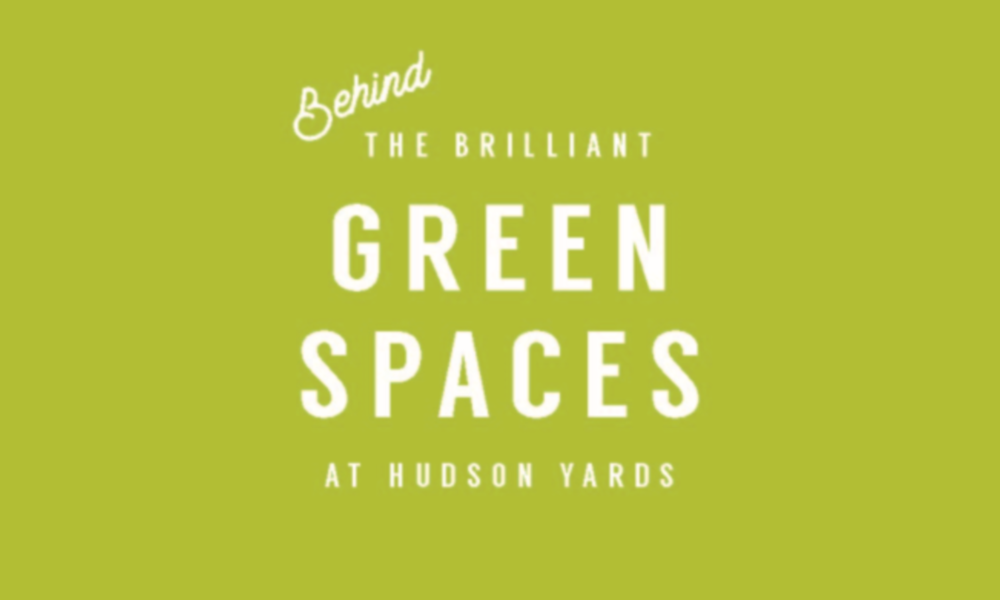The green space of the Public Square & Gardens is a beautiful respite for city dwellers and visitors alike for many years to come. And it’s only going to get better: when the western portion of the campus is completed, half of it will be parks and plazas.
Currently, the five acres of greenery in the Eastern Yards features more than 28,000 plants and 200 mature trees - many native to New York, particularly the Hudson Valley. The oaks, hickories and flowering shrubs in turn welcome more than 225 species of pollinators, including bees and butterflies that are otherwise threatened by habitat loss and climate change. Even the granite pavement nods to local geologic history; the island of Manhattan is built atop three types of rock: schist, marble, and granite.
And because it all sits atop an active railyard, The Public Square and Gardens also has to be New York City’s smartest park, with a sophisticated layered approach to nutrient delivery, temperature regulation, irrigation and drainage. For example, the plants and trees have their own climate-control system to combat the 150-degree heat generated below. Cooling water circulates through underground tubes around their root systems as 15 large fans - the type found in jet engines - blow 45-mph fresh air breezes toward the tracks. Storm water retention tanks help Hudson Yards collect nearly 10 million gallons of rainwater each year to be filtered into the building's cooling and irrigation systems to water the Public Square and Gardens.
The result: Hudson Yards is Manhattan’s first LEED Gold neighborhood.






 Hudson Yards
Hudson Yards